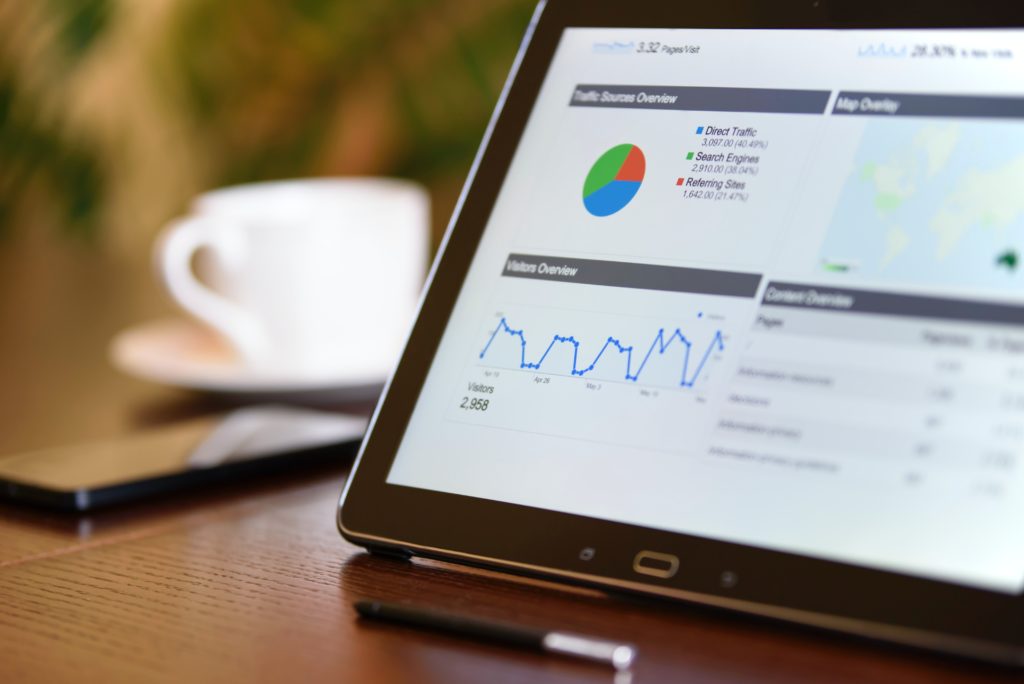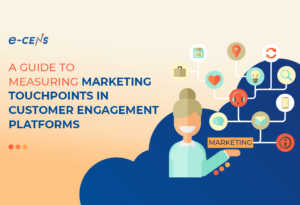The primary Mobile App metric most teams follow when they launch a Mobile App is downloads. But, downloads are just the starting point.
Keeping your users engaged and coming back to your app is notoriously difficult to achieve, with the latest reports putting the average day 30 retention rate for Mobile Apps at barely above 6%. Yet, the time spent on Mobile Apps has risen by 30% in just two years, and the average daily time spent on apps per user globally is 4.8 hours, accounting for one-third of the average daily waking hours. This suggests that some Mobile App developers and marketing teams have found the secret sauce.
Knowing how to derive valuable insights from your Mobile App metrics is key to ensuring that your app is one of these success stories. Read on to learn more about the importance of Mobile Analytics, key metrics for Mobile Apps, and the challenges of meeting digital consumers’ demands.
Table of Contents
Mobile App Metrics – What are They?
Mobile App metrics are key indicators of your product’s functionality and your audience’s engagement. Metrics can be very straightforward, such as the number of daily or monthly downloads. They can also, however, be more sophisticated and reveal which part of your app users have the most difficulty with, what causes them to close the app, and what aspect of the app they use the most.
Focusing on your Mobile App performance metrics can help you acquire the insights necessary to keep up with the pace of an increasingly competitive market. To manage and make sense of all the data your app delivers you, tools such as Firebase, Mixpanel, and Adjust are indispensable. Such solutions also enable audience segmentation, campaign executions, and third-party integrations.
Why do Companies use Mobile App Metrics?
Mobile Analytics is key to understanding your users’ behavior. When you monitor click-through rates or average time spent in-app, you are gaining critical information on how the average user responds to your interface and content, and how it ultimately affects their experience.
Additionally, Mobile Analytics provides insight into your Customer Lifetime Value and Customer Acquisition Cost. Based on such metrics, you can make calculated investment decisions and base your growth projections on verifiable, tangible data, ultimately resulting in a higher return on investment (ROI).
A better understanding of your users’ motivations and behavior also greatly helps strategic planning. If one of your goals is to reduce uninstall rates, then crash rates analysis will reveal which screens have the highest number of crashes. Addressing problematic screens then becomes the first step to meet your end goal – a better user experience and longer session durations.
What are the Most Important Mobile App Metrics?
There are myriad Mobile App performance metrics, and which key performance indicators will best inform your research varies depending on the app type. There are, however, some core metrics that provide valuable insights to all Mobile App developers and marketing teams.
The following four Mobile App KPIs are considered indispensable across industries today:
- Stickiness
- Average session length
- Customer Lifetime Value
- Customer Acquisition Cost

Stickiness
Stickiness lies at the core of your user engagement data and is part of a broader group of metrics relating to engagement and retention. Addressing stickiness means looking at the number of active, regular users. First, though, you have to have a firm understanding of what makes an active user. This depends on the type of your app – in the example of social media giant Facebook, an active user is anyone who regularly engages with the app’s contents by either liking, sharing, or commenting on others’ posts.
Stickiness targets also vary by industry, app type, and development stage. According to SaaS Growth Today, for example, the average stickiness rate for the SaaS industry is 13%. This means that, on average, a single user interacts with the product slightly less than four days per month. Anything above this percentage is considered a good performance.
Stickiness can be calculated by dividing the number of daily active users (DAU) and monthly active users (MAU). The end sum should give you a percentage of users who regularly use your app.
Keeping track of your stickiness ratio can be especially useful for the marketing team, which can workshop campaigns to specifically target an audience segment with lower engagement levels or a higher churn rate.
Average Session Length
While stickiness provides you with an overview of your active user base, Average Session Length (ASL) drills down for deeper insight – showing you where and how user time is being spent. Indirectly, this metric reveals which part of your app draws the most attention and provides the most value to your audience.
Keep in mind that ASL rates are not a universal measure of quality and need to be analyzed in the context of the service you provide.
Suppose the goal of your Mobile App is to provide a link to another resource or experience. In that case, a long session length means the needs of your audience are not being met fast enough, indicating the customer experience you provide leaves something to be desired. However, if your product offers an experience, for example, a crossword app, the higher the Average Session Length, the better.
Therefore, looking at the average total duration and number of user sessions in a chosen period of time can be interpreted in two ways. Average Session Length can give you feedback on how engaging your app’s content is or how expediently it performs.
Customer Lifetime Value
Customer Lifetime Value (CLTV) represents the average value your users bring to the table, and there’s a reason why companies swear by this acquisition-related metric.
Customer Lifetime Value consists of three sets of variables:
- Monetization – revenue generated by users (through subscriptions, ad impressions, in-app transactions, etc.).
- Retention – the frequency of return visits.
- Virality – number of new users generated by referrals.
Your CLTV data is instrumental for forecasting business growth, and, therefore, has a part to play in budget planning. It is one of several crucial metrics to consult when discussing your ROI; as long as your CLTV tops your Customer Acquisition Cost (CAC), your business comes out on top.
Customer Acquisition Cost (CAC)
Customer Acquisition Cost (CAC) is a valuable Mobile App Metric measuring acquisition costs. When it comes to Mobile App metrics in particular, CAC’s close ‘cousin’ is Cost Per Install (CPI).
CAC and CPI represent the promotional costs associated with each individual user downloading your app. Assessing these metrics is very easy – CPI is calculated by dividing the amount you spent on advertisements by the number of app downloads during a specific marketing campaign. And though CPI benchmarks vary, the global average across all app types is 0.53 USD for Android and 1.24 USD for iPhones and iPads.
If your CPI seems too high, it usually means you are investing too much in a particular campaign, and it is simply not bringing you the desired outcome (increased number of users).
Both CLTV and CAC are of the utmost importance for overall business growth; they also serve as crucial data points when deciding on, and planning for, your next marketing move. With right-time metrics, executives, financial experts, and the marketing team can workshop the best possible promotional strategy that will give you the acquisition rates you need – without breaking the bank.
Summing Up
It’s important to remember that CAC, CLTV, ASL, and stickiness are just four out of dozens of Mobile App metrics that can be tracked today. Other top candidates include load speeds, churn rates, session intervals, screens per visit… and the list goes on.
As we’ve explored in this article, every business is different, and each Mobile Application should set its own KPIs according to its unique business goals and audience preferences.
Designing and launching a Mobile App has never been more popular – or more exciting. In 2021 alone, 230 billion individual app downloads were recorded. For expert advice on which Mobile App metrics your business should prioritize and assistance with top-of-the-line Mobile Analytics tools, contact us at e-CENS.
Our team of Digital Analytics experts will be happy to help you with all questions you might have on mobile data management and actionable insights.
The essential guide to Mobile Analytics: eBook
Get the most out of mobile analytics with e-CENS’s essential guide on their most crucial benefit in today’s app-based market economy: instant insight into your App’s performance.





